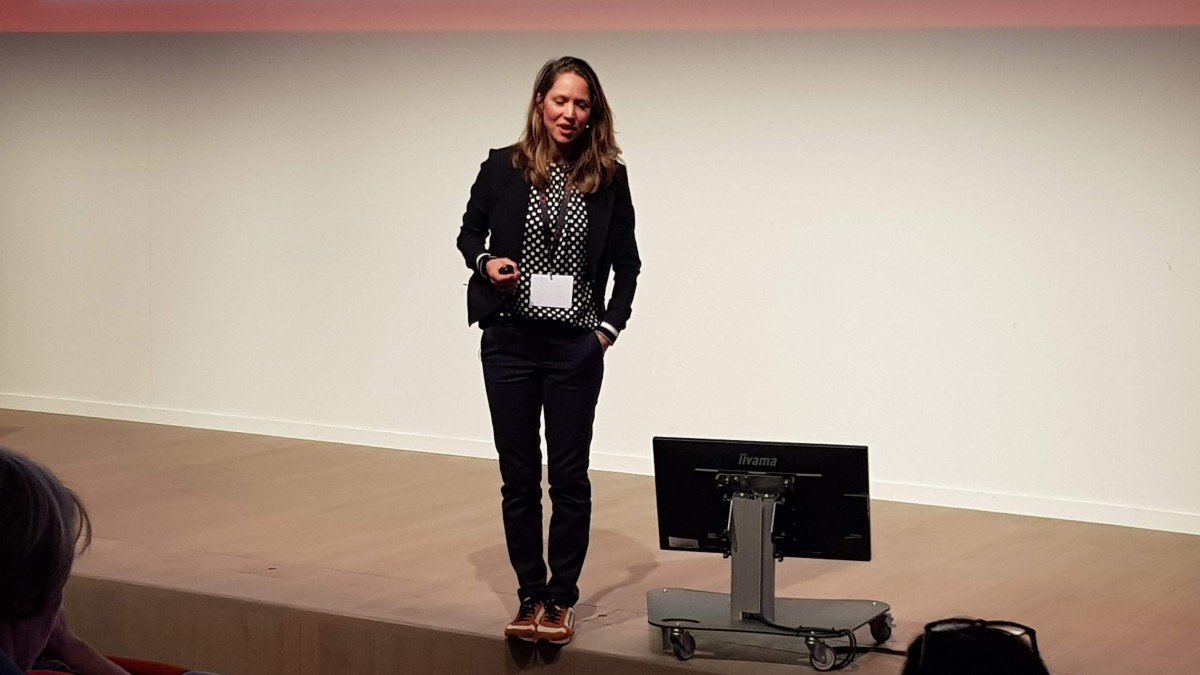
Because of the expected business advantages and the much-needed innovations, Vanderlande decided to separate a group of employees and position them as a stand-alone business unit in 2017. Today, almost two years later, Vanderlande’s Director of Strategy & Sustainability Esther Kersten shared some of the results with her audience at the Beyond Tech Event.
Vanderlande baggage systems move 10.1 million pieces of luggage each day, making them global leaders in logistics automation. But in order to keep on innovating in a world that is dominated by fixed infrastructures, the company thought it had to accelerate through a corporate innovation project. “We all know that travelling will continue to be on top of people’s wish lists”, Kersten explained. “Airports will keep on growing at the same rate as passenger and cargo numbers. So we will have to grow with them, but the question then is: how to enable this, knowing that there is this huge fixed infrastructure?”
That’s how FLEET started: a start-up like organisation within Vanderlande. Kersten: “Vanderlande has a successful business, but at some point, we became aware that the chance of failure would be higher if we would just continue our operation as we had done previously. We would have been too busy with our normal operation, we would miss the new competencies, especially around software development, and basically, we would not have the right organisation to be as innovative as we would need to be.”
FLEET was the answer to all of that, Kersten said. “Working like a lean start-up, but within the big company, would offer us the ability to learn faster than anyone else. Collaborating with clients, giving us direct feedback loops, would speed up developments, and give us a lot of first-mover advantages.”
And it worked. “Thanks to FLEET, we were able to build an innovative product with an innovative business model in a short period of time. FLEET baggage handling is fully automated and has full flexibility. It is ‘breathing’ with what is happening outside. So an airport can grow with the system and the system can grow with the airport. And because of our way of working, we can improve it on a daily basis.”
The new FLEET baggage logistics have already been installed at Rotterdam The Hague Airport, and another airport in the United States will follow shortly. Also, Lelystad airport has chosen this system. So at Vanderlande, this is considered a huge success. Not only because the technology works, but also because of the new business model: Vanderlande offers the system as a service instead of selling it to an airport. But now, a new problem has arisen: how to scale up this project, and how to scale up the process and the business?
Vanderlande’s own research showed that FLEET had brought increased autonomy for the employees, a direct market exposure, a way to validate the results with customers right from the start, multidisciplinary teamwork, and a fully focused and dedicated process. But now that the product has shown to be a success and is ready for a further rollout, what should be the next step? “In other words, being in this twilight zone between being a corporate start-up and a scale-up, how can we bridge the gap?”
Kersten leaves her audience with this important question. Of course, she has some answers ready and of course, she knows it will be important to foster the start-up status, as well as turn FLEET into a mature business. “Can there be a perfect moment to give the process back to the corporate business? What is the right timing?” In any case, Kersten concludes, “we need to combine the advantages of being a start-up with those of the corporate company.”



